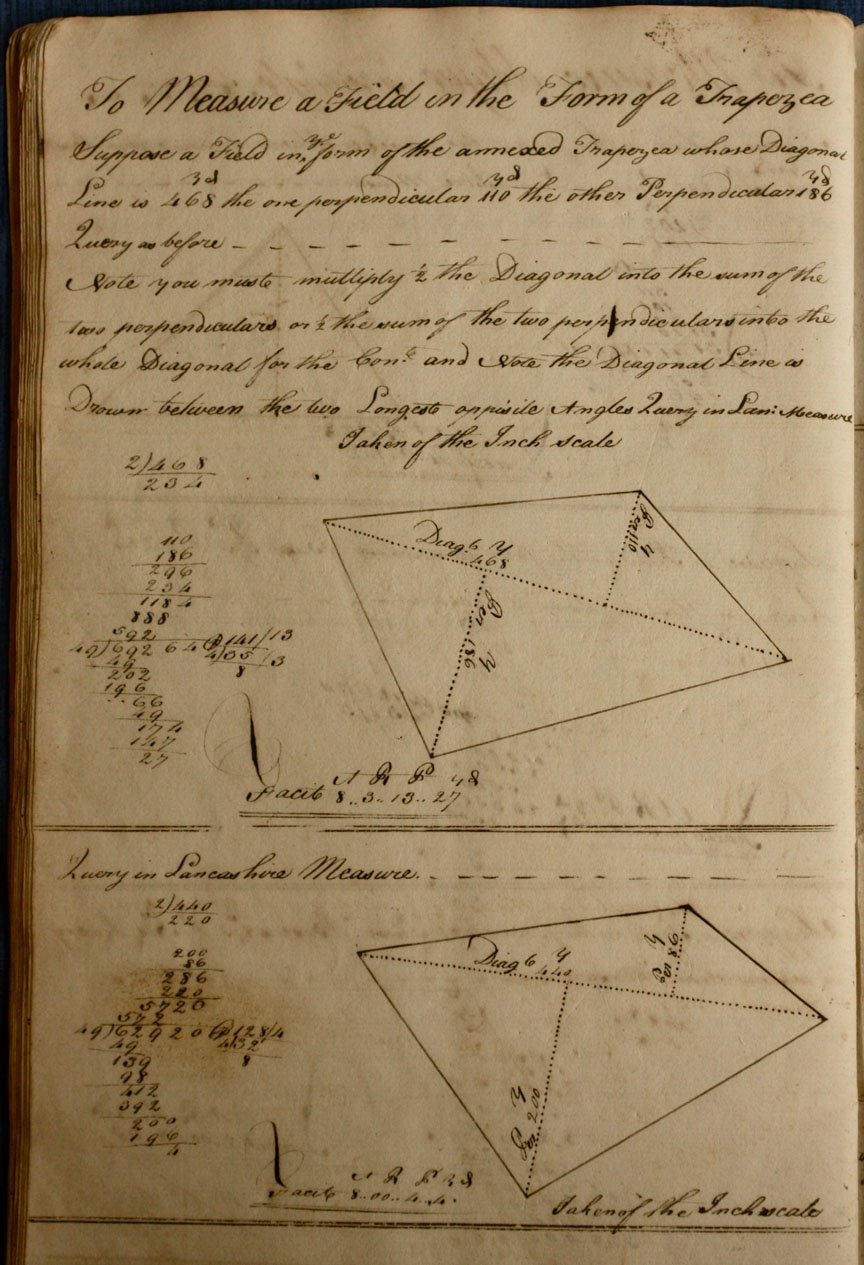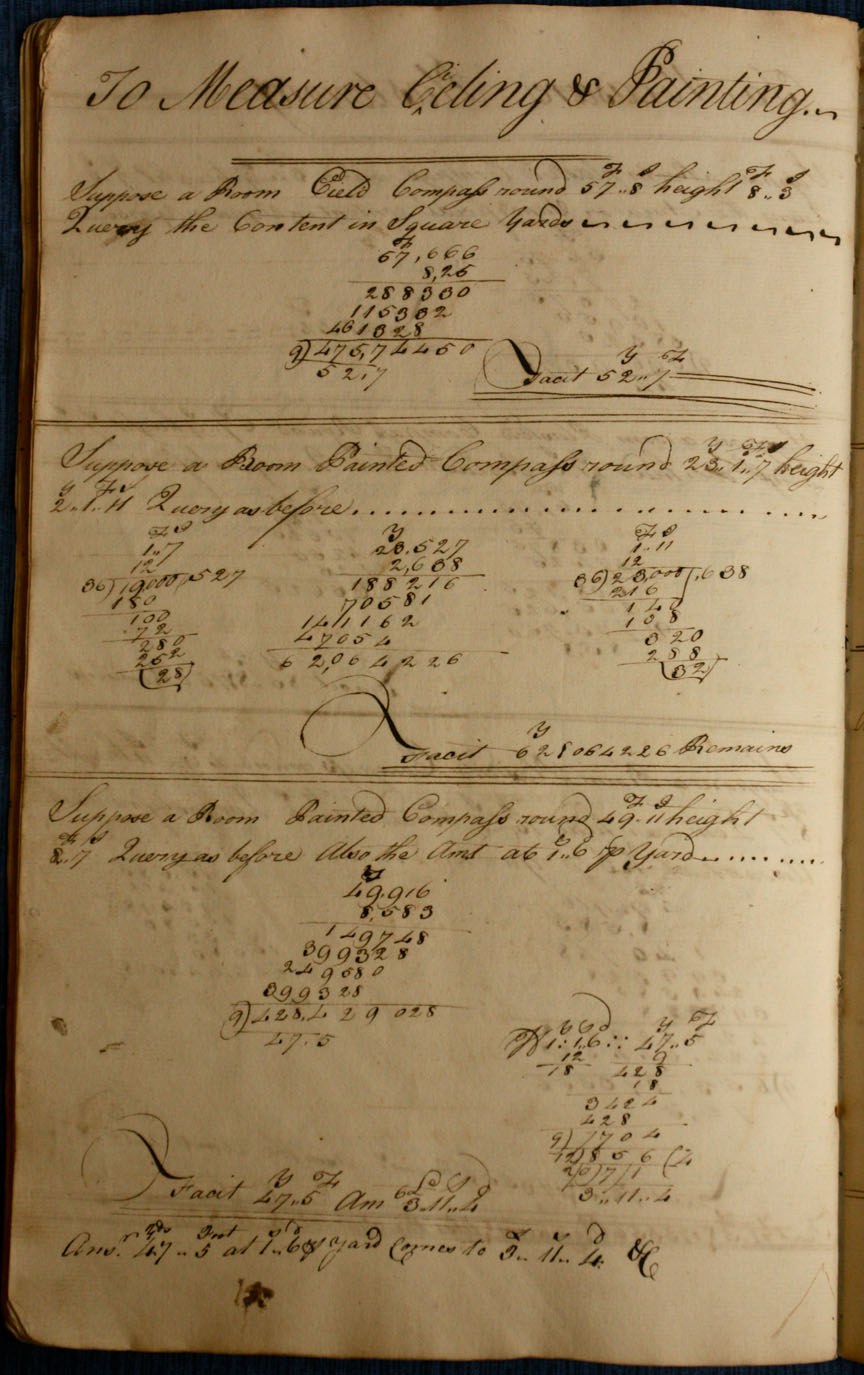- About MAA
- Membership
- MAA Publications
- Periodicals
- Blogs
- MAA Book Series
- MAA Press (an imprint of the AMS)
- MAA Notes
- MAA Reviews
- Mathematical Communication
- Information for Libraries
- Author Resources
- Advertise with MAA
- Meetings
- Competitions
- Programs
- Communities
- MAA Sections
- SIGMAA
- MAA Connect
- Students
- MAA Awards
- Awards Booklets
- Writing Awards
- Teaching Awards
- Service Awards
- Research Awards
- Lecture Awards
- Putnam Competition Individual and Team Winners
- D. E. Shaw Group AMC 8 Awards & Certificates
- Maryam Mirzakhani AMC 10 A Awards & Certificates
- Two Sigma AMC 10 B Awards & Certificates
- Jane Street AMC 12 A Awards & Certificates
- Akamai AMC 12 B Awards & Certificates
- High School Teachers
- News
You are here
Learning Geometry in Georgian England - Robert Gardner's 'Book of Accompts'
Robert Gardner compiled what he called his ‘Book of Accompts’ during the 1780s, in Lancashire. It covered a period in his mathematical education when he was doing some advanced arithmetic and also – despite the title – learning some geometry. It was a larger book than Thomas Porcher’s – nearly a foot tall, giving lots of room on the page for diagrams and illustrations – but a slimmer one: just fifty pages or so.
The geometrical parts were thoroughly practical in character.
To Measure Windows. Multiply the side of a Square by its Self or if a long Square the Length by the Bredth. Note 144 Sq. Inches makes a Square Foot, 9 Square Feet a Square Yard, and 421/4 Square Yards make a Rood Westmoreland Measure.
(We’ll come back to that slightly surprising Westmoreland rood.)
Other topics were measuring pavements, measuring boards and boarded floors, and measuring land. There was a section, for instance, devoted to measuring trapezoidal pieces of land: presumably a response to the shape of local fields.
Suppose a Field in the form of the annexed Trapezea whose Diagonal Line is 468 yards the one perpendicular 110 yards the other Perpendicular 186 Yards. … Note you must multiply 1/2 the Diagonal into the sum of the two perpendiculars or 1/2 the sum of the two perpendiculars into the whole Diagonal for the Contents.

Figure 5. Robert Gardner’s trapezoidal field
In this case the sum of the perpendiculars was 296 yards and half the diagonal was 234; their product was 69,264 square yards. Gardner wrote out the working in full.
The geometric and trigonometrical problems to be solved were not always very far removed from what we saw in Thomas Porcher’s case. But Gardner solved his problems by pre-learned rules, and was unconcerned with such abstractions as theorems and proofs. His questions demanded not elegant methods but practicable answers, and space was given to such minutiae as the different systems of measurement one might come across:
7 Yards Square that is 49 yards make a Perch Lancashire Measure; Other Counties have a Different Number of Yards to their Pearch. As Westmoreland have 61/2 Yards … to their Pearch that is 421/4 or 42.25 Yards to their [square] Pearch. Statute or Yorkshire have 51/2 Yards to their Pearch that is 301/4 or 30.25 Yards to their [square] Pearch.

Figure 6. Robert Gardner measures ceilings and paintwork.
This was also a messy book, as the illustrations above show: one quite clearly aimed at learning practical techniques rather than anything else. Gardner might have been learning this material at a school or as part of a class of students with a tutor. It certainly doesn’t look as if anyone was paying very close attention to the appearance of his work on the page, and indeed the appearance really doesn’t seem to have been the point. If it was less neat and careful in some respects than Thomas Porcher’s book, Gardner’s nevertheless had a concern with correct methods and accurate results: but for very different reasons. Here was no desire to beautify the mind, but a part of a practical education for a tradesman. It’s an utterly different kind of book from Porcher’s: a practical tool rather than the record of a disciplined and beautiful mind.
Benjamin Wardhaugh (University of Oxford), "Learning Geometry in Georgian England - Robert Gardner's 'Book of Accompts'," Convergence (August 2012), DOI:10.4169/loci003930




